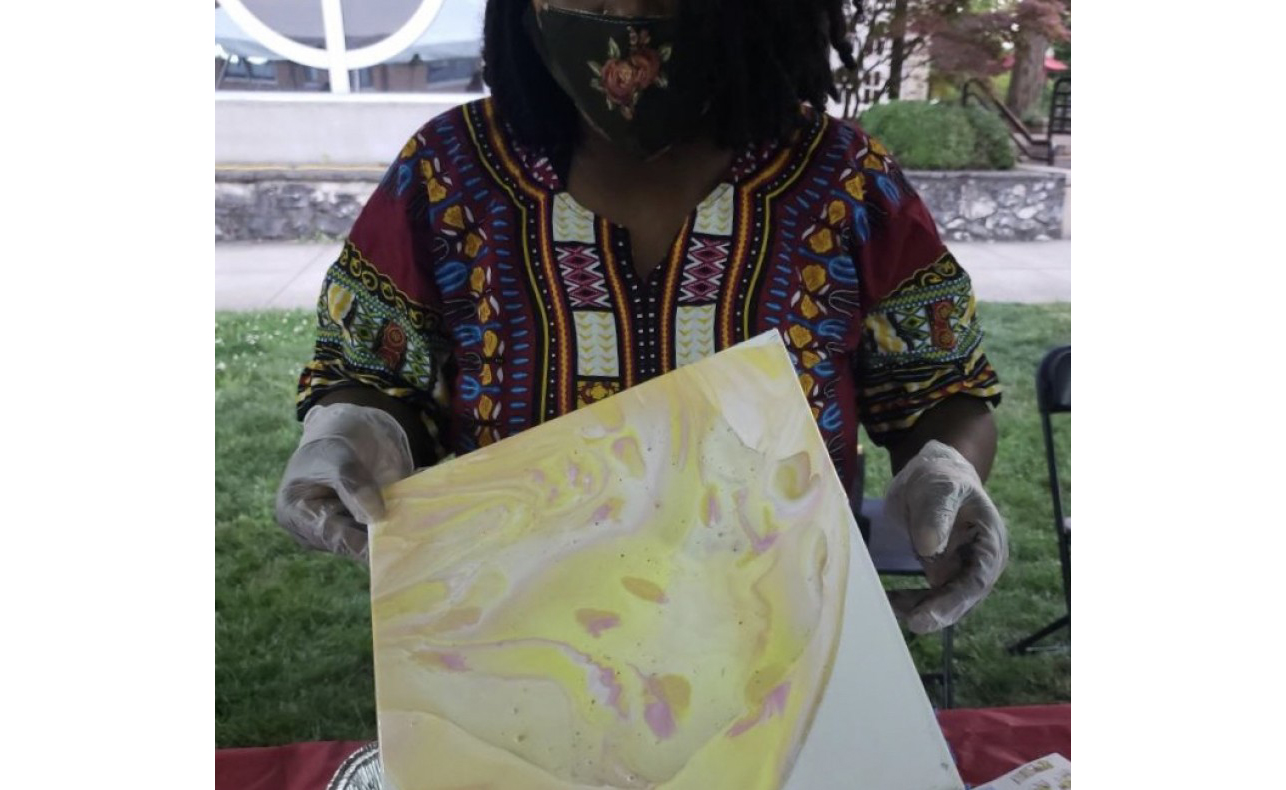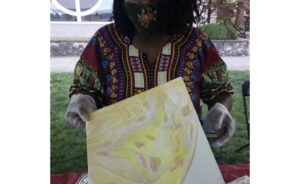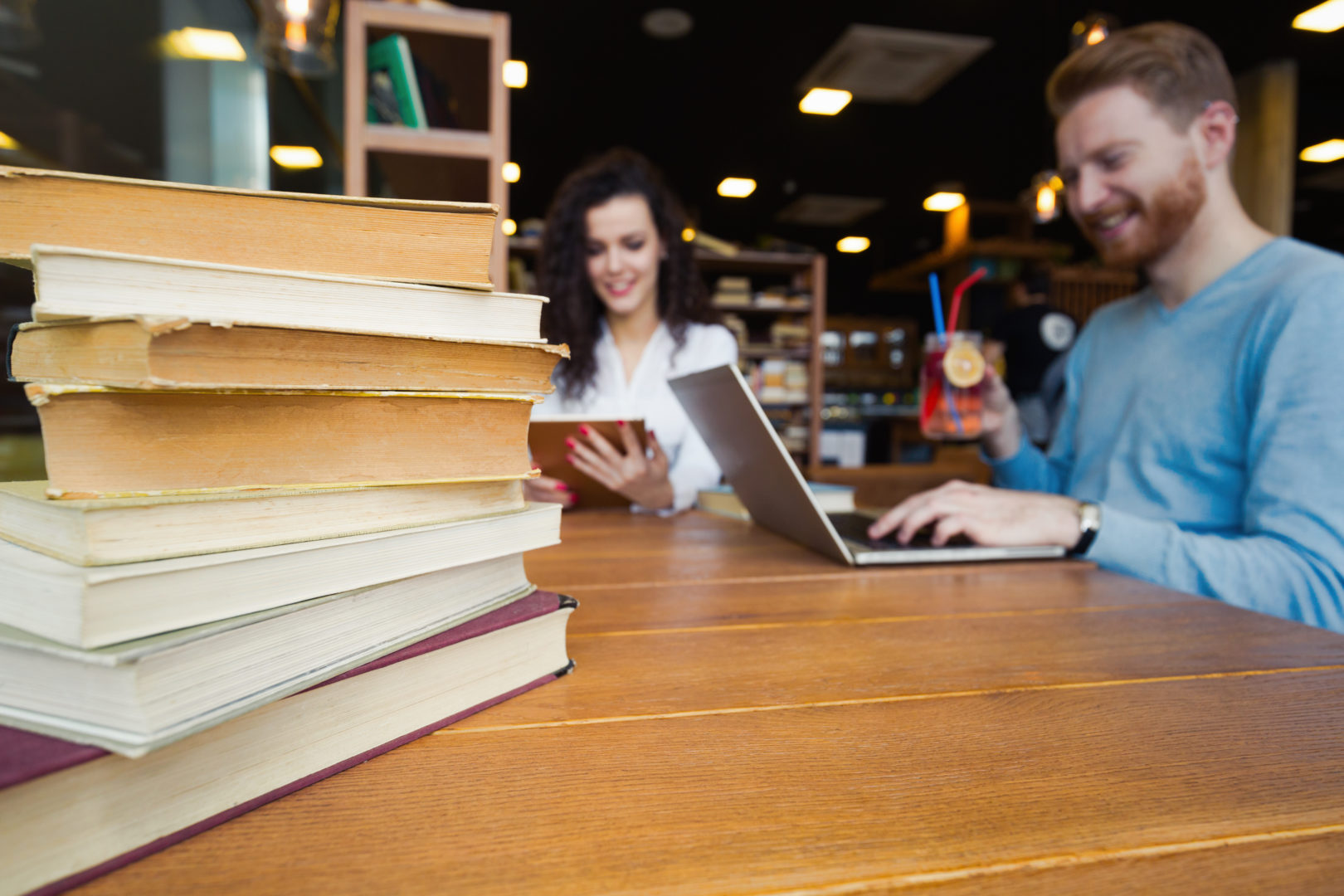
11 Nov Creative Ways to Entertain College Students During COVID-19
With in-person events being limited this semester, Wittenberg University leaders have found creative ways to entertain students. One of those ways is through art. Wittenberg’s Offices of the Pastor, Student Involvement, and Residence Life have come together to host Art After Dark programs and Grab and Go projects since students arrived on campus in August.
 Art After Dark, which was created in 2017 as part of Wittenberg’s Witt Late Night programming, has become more prevalent through the pandemic this semester and is now a stand-alone event occurring a few times a month. Providing students an opportunity to learn a new art technique and create their own piece of art, the program was initially taught by former coach, 1998 alumna, and professor Sarah Jurewicz. Art After Dark has gone on to have other instructors who have experience with art and art instruction including Sherri Sadowski, associate dean of students, and Deacon Dan Jacob, ministry associate and Wittenberg class of 2010.
Art After Dark, which was created in 2017 as part of Wittenberg’s Witt Late Night programming, has become more prevalent through the pandemic this semester and is now a stand-alone event occurring a few times a month. Providing students an opportunity to learn a new art technique and create their own piece of art, the program was initially taught by former coach, 1998 alumna, and professor Sarah Jurewicz. Art After Dark has gone on to have other instructors who have experience with art and art instruction including Sherri Sadowski, associate dean of students, and Deacon Dan Jacob, ministry associate and Wittenberg class of 2010.
“The goal for me, when it comes to Art After Dark and the grab bags, is to help students find creative outlets, especially during these stressful times,” Jacob explained. “The events and projects themselves are certainly opportunities for the students to let their emotions out on the canvas — so to speak — but they are also carefully designed to teach the students artists’ techniques so that they can invent their own works of art. Twice we did fluid painting, but we also recently led floating chalk painting.”
The pastor’s office has led three Art After Dark programs and provided two Grab Bag projects — a “create your own journal” and a “bookend silhouette” grab bag kit. Jacob will also lead the sixth and final Art After Dark project of the semester on Thursday, Nov. 12, offering students an opportunity to paint a pine cone.
“The ideas for the chapel art programs came from a variety of sources. The journals were born out of a project that I actually did virtually with children in churches across Ohio,” Jacob explained. “Fluid painting is a technique that I had actually never used before but have been interested in trying, so we tried it together as a campus with great results. With my own art projects, I strive to use as many recycled or repurposed materials as possible, so when I rescued over 100 bookends from the library of a closed-down elementary school, I knew we had to come up with a good project for them. That’s how the silhouette bookends were born.”
Maddy Marsengill, Wittenberg class of 2023 and a student chapel worker majoring in religion and minoring in Chinese, has been assisting Jacob. And while she doesn’t have a background in art, Marsengill is a quick study.
“I enjoy the experience of making art with others,” said Marsengill, treasurer of the Weaver Chapel Association, packing committee chair for the Lesotho Nutrition Initiative, and secretary of the East Asian Studies Club. “There is something special in being able to take some of your knowledge and share it with others so they can enjoy it and share it with others, too. I think the focus and goals for these Art After Dark projects are a little bit different for everyone. For some people, it is a way to safely socialize with others while doing a fun project. For others it is a way they can forget about the stresses of college and become a kid again even if it is just for an hour.”
Attendance has been great, in fact each Art After Dark event, held outdoors thus far, has been sold out, while grab bags are typically gobbled up by the students. The grab bags have been offered every week this semester at the Benham-Pence Student Center desk for students to pick up as they pass by in keeping with COVID rules.
“The bags are new this year because it was the easiest thing to do because of COVID,” said Liz Artz, director of student involvement. “We will continue to do them the rest of this semester and into the next. We prepare for 50 each time and are always out of them. I came up with a lot of the ideas through Pinterest and from working at camps in the past. We bought mini plastic containers, paintbrushes, and other supplies so the students would be able to take everything with them. We’ve had numerous students participating and helping us put the projects together. It’s been an all hands-on-deck effort.”
And speaking of COVID, adjustments have certainly been made for all campus activities this year.
“It’s been challenging,” Artz said. “While you want as many people as possible to participate in all the events, you have to keep in mind all the COVID rules and keep crowds to a minimum. Many times, we have to host the events in multiple rooms to make sure we are keeping the number of people down and for social distancing purposes. It can be very hard, but we’ve been doing a good job.”
“We have definitely had to make some adjustments for events to be safe during the pandemic,” Jacob added. “Some adjustments have been more disruptive than others. We have had to rethink a lot of the ways we do things, which has actually led to some innovation and even opportunities to engage with students in ways we haven’t before.”
Wittenberg organizations have offered other painting and art events this semester, including tie-dying masks, bandanas, and T-shirts. On Oct. 9, the chapel also held the art-inspired event Chalk Out Loud, inviting students to write messages of support to LGBTQAI+ community members with sidewalk chalk. The centerpiece of the event was a giant chalk rainbow that the chapel staff and GSDA created together, stretching along East Campus Drive.
Stay tuned for more exciting art events next semester.






